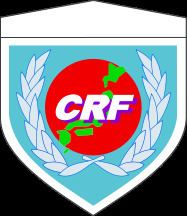Country Japan Size ~ 4,500 personnel | Type Rapid Reaction Force | |
 | ||
Active March 28, 2007 – present Role Special operationsDirect ActionAir assaultUnconventional WarfareDomestic and International Counter-TerrorismCounter-Piracy operationsAirborne assaultAnti-NBC WarfareAerial TransportationMilitary Training Units Engagements United Nations Disengagement Observer Force Similar Japan Ground Self‑Defe, Japan Self‑Defense Forces, United States Army - Jap, Japan Air Self‑Defense Force, Japan Maritime Self‑Defe | ||
Soldiers update japan self defense force s central readiness force s new hq
The Central Readiness Force (中央即応集団, Chūō Sokuō Shūdan) was established on March 28, 2007, following the upgrading of the Japanese Defense Ministry from the former Japanese Defense Agency. It was initially based at Japan Ground Self-Defense Force (JGSDF) Camp Asaka in Nerima, Tokyo. The command supervises a number of different units, whose roles range from special forces operations to advance preparation for greater JSDF deployments. The unit can also be deployed as Japan's response to combat operations during peacekeeping missions as a rapid reaction force. In March 2009, the force was transferred to Camp Zama, in Sagamihara, in the Kanagawa Prefecture. As a part of the Japanese government's National Defense Program Guidelines which were developed in response to the need to improve the JGSDF's capabilities to deal with new defense issues such as foreign peacekeeping operations and anti-terrorist operations.
Contents
- Soldiers update japan self defense force s central readiness force s new hq
- History
- Structure
- Chain of command
- Divisions
- Personnel
- Formation
- Symbols
- CRF insignia
- CRF patch
- References
The CRF held a formal ceremony at Camp Askaka on March 31, 2007, during which Japanese Defense Minister Fumio Kyuma, who was the guest of honour, formally inaugurated the force. Lieutenant General Josho Yamaguchi (山口淨秀 陸将, Yamaguchi Josho Rikushō) was the CRF's first commanding officer. The current commander of the CRF is Lt. Gen. Masahiro Hidaka, who was appointed on July 26, 2012.
History
Formed on March 28, 2007, the CRF was established, consolidating the 1st Airborne Brigade, the 1st Helicopter Brigade, the Japanese Special Forces Group and the 101st NBC Protection Unit into a single force capable of conduct operations both in Japan and in foreign countries. On March 31, 2007, the Central Readiness Force held a formal inauguration ceremony at JGSDF Camp Asaka in Nerima, Tokyo, which included guests such as Fumio Kyuma and Josho Yamaguchi, the former presiding over the formal establishment of the CRF.
The CRF was deployed on its first civil disaster mission on April 29, 2007, when it was dispatched to quell wildfires in the forests of the Yamanashi Prefecture, with the 1st Helicopter Brigade being deployed after its integration to the force. The CRF later conducted a military exercise on October 31, 2007, with its subordinate units participating in a wide range of scenarios from anti-NBC cleanup to personnel transportation and evacuation.
Six officers from the CRF were deployed to Nepal as part of the United Nations Mission in Nepal on March 30, 2007 as part of their first CRF peacekeeping mission. A CRF officer deployed to Nepal as part of the UNMIN was decorated for completing his duties in monitoring the ceasefire between the Nepalese government and Maoist rebels. The officers returned to Japan on March 18, 2008. Four CRF officers under the UNDOF's transport unit were deployed to France as Japanese representatives on July 14, 2008, for its annual Bastille Day Military Parade celebration. The CRF was deployed to assist in the aftermath of the Tōhoku earthquake and tsunami in humanitarian relief efforts, as well as to combat radiation problems at the Fukushima nuclear power plant.
The CRF has been deployed in Djibouti in the Horn of Africa. Asahi Shimbun wrote in January 2015 of plans to reinforce the JSDF base in Djibouti, Africa including mobilizing light armored vehicles to rescue Japanese citizens by land routes.
Structure
The structure of the CRF has been created with the following established for its headquarters:
Chain of command
Divisions
Personnel
Formation
The following is the formation of the CRF as of 2011:
Symbols
The following are represented in the insignia and patch of the Central Readiness Force:
CRF insignia
Japanese Archipelago and Red Circle surrounding it – CRF's mandate to operate in Japanese soil.Laurel – Hope for a successful mission.Purple Shadow – CRF's joint cooperation with the Japanese Ground Self-Defense Forces, the Japanese Maritime Self-Defense Forces and the Japanese Air Self-Defense Forces.The insignia symbolizes the CRF's mandate to operate in Japanese soil.
CRF patch
Globe – CRF's mandate to operate anywhere around the world.Cherry Blossoms – CRF's commanding officer.Red Circle – Japan.The patch symbolizes the CRF's mandate to operate in foreign territory as a representative of Japan in Peacekeeping missions.
